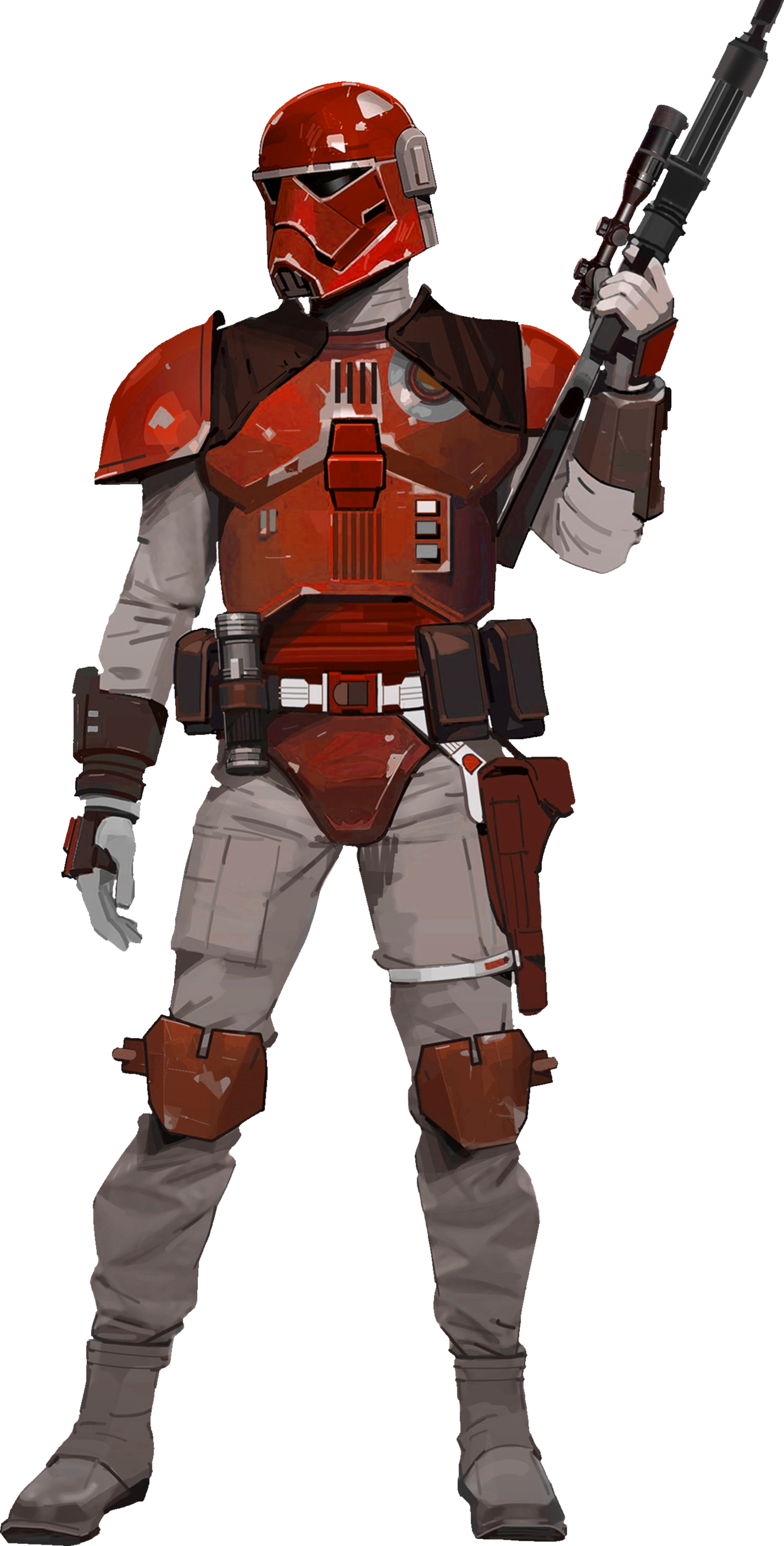Be All My Sins Remember'd

Lorrdian Security Officer in a Liberator-type Combat Armor
- Intent: To create armor for the use by the Lorrdian government in times of war
- Image Source: [ Brian Matyas ]
- Canon Link: Venom Assault armor, armored jumpsuit, 'Knighthunter' armor
- Permissions: N/a
- Primary Source: N/a
- Manufacturer: Moberan Fabricant
- Affiliation: Moberan Fabricant
- Model: Liberator-type combat armor
- Codename: Mari
- Modularity: Yes
- Plates can be added or removed
- Additional gear can be mounted via gription panels
- Can be modified to fit individuals with at least two arms or similarly long limbs ending in manipulators
- Mission-specific armorweave cape variant
- Easily recolored
- Production: Limited
- Material:
- Turadium
- Magnatomic adhesive
- Duraplast
- Madilon
- Armorweave
- Betaplast
- Stygian-triprismatic Polymer
- Cortosis
- Reactive fabric
- Thermal Gel
- Computer components
- Various electrical components
- Optional:
- Classification: Multipurpose Pressurized Combat Armor
- Weight: Average
- Resistances:
- Energy: High
- Kinetic: High
- Lightsabers: High
- Other:
- Sonic: Average
- EMP/ION: High
- Elemental: Low
- Turadium helmet with mesh underlay
- Pressure regulator
- Micropower Plant
- Booster jet system
- Laser-reflective armor coating
- Madilon endoskeletal structural support system
- MV-18 "Force" Class Vambraces
- TXP SBG-01x Bodyglove
- Gription panels
- Force Hunter: With the extensive presence of Force Users throughout the galaxy, Liberator-type combat armor was designed with them in mind. Numerous systems enabled a regular soldier to engage with Force Users on a level that would otherwise be impossible.
- Advanced Composite Armor: While visually simplistic, Liberator-type armor was a composite armor designed to protect its wearer from energy attacks, kinetic impacts, lightsaber strikes, and EMP/Ionic weaponry while in the field.with several layers designed to work as a composite
- Space-capable: Liberator-type armor was pressurized, thermoregulated, and possessed breathing apparatus for its wearer. This allowed an individual to remain within the vacuum of space for six hours till their oxygen supply ran out; it was possible to extend this time frame by means of secondary equipment connected to the breathing apparatus itself.
- Coverage: To ensure the weight of the armor was not overwhelming and that the wearer would retain mobility, the armor did not fully cover the arms or legs. This exposed the arms and legs which were not as strongly protected from blaster fire as the center of mass and head which were the preferred targets.
- Extreme Locales: The Liberator-type armor had a limited operational window on planets with extreme weather. Designed to work within typically habitable planets, there was an official six hour window of operation for the armor on planets designated uninhabitable to all but extremeophiles; such planets would include Mustafar, Hoth, or Taul where the atmosphere was significantly too hot, too cold, or corrosive.
- Unconventional Weaponry: Designed to protect the wearer from sonic weaponry and the common dangers of the galaxy, the designers did not anticipate the use of unconventional battlefield weaponry such as disruptors, carbonite weaponry, incendiaries, and other non-standard weaponry. This leaves the wearer with minimal protection against such tools of war.
Designed in 861 ABY during the Imperial Apostasy, the Liberator-type armor was yet another response by the Pit of Moberan - and Moberan Fabricant - to the increased surge in hostile Force Users. Its designers, acclaimed for their work with the Lorrd Security Force, worked to provide the Lorrdian government with a multipurpose armor that could be used by pilots and infantrymen alike. The result was an armor capable of direct exposure to space, high resilience against enemy attack, and even capable of going into hand-to-hand combat with a Force User and potentially winning.
The armor was a composite, consisting of several layers of technologies that worked synergistic to provide maximum defensive coverage across as large a surface as possible. These technologies included a highly advanced bodyglove, affixed gription panels for modularity, a booster jet and pressure regulator for vacuums, combat boots for better mobility, vambraces for additional weaponry and tactical gear, a micropower plant built into the armor itself, turadium armor plating and helmet coated with a laser-reflective substance for maximum protection, and a mesh underlay and madilon endoskeletal system to defend the user from Force attacks. The last of which, the madilon endoskeletal system, took the brunt of the damage should the wearer be Force Pushed or crushed, acting as a high tensile strength skeleton to defend the wearer from an immediate death sentence and buy them enough time to potentially escape the grip; this system, unfortunately, was not wholly unfailable.
After its designing phase, it was immediately rushed into fabrication alongside the P60 Heavy Sonic Stunner and the SFP2000 Sonic Rifle for the Lorrdian Security Force as they were swiftly reorganized into a government-sanctioned militia under the direct command of Prelate Sedith Dinn. With Moberan Fabricant existing as a state-owned enterprise, it came as no surprise that the armor - with its distinctive triangular eyes and characteristic 'smile' - was soon seen as the standard armor for the Lorrdian government itself.
Last edited:





